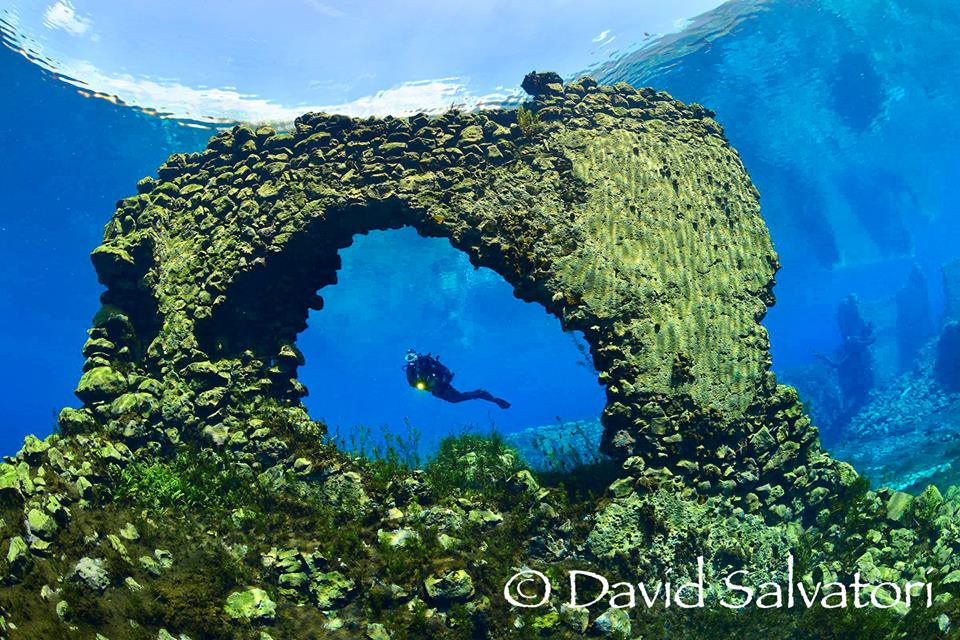
All images courtesy of and copyrighted by David Salvatori
Like many divers, I often forget about the potential wonders of freshwater diving in my haste to discover all that the world’s oceans have to offer. But there are some magical sights awaiting those willing to take a break from the sea and head inland instead, and Italy’s Capo D’Acqua is an excellent place to start. Located near the town of Capestrano in the Abruzzo region of the country, the lake is the privately owned highlight of the Parco Nazionale del Gran Sasso e Monti Della Laga. It was artificially created in the 1960s, when the valley was flooded to provide an irrigation source for the surrounding farmland, and today also acts as a source of hydroelectricity. Nestled in the Abruzzo mountains, the lake lies at an altitude of over 980 feet/300 meters, meaning that those divers wishing to explore its shallow depths must plan their dives using altitude tables. It also means that the scenery surrounding the lake is predictably spectacular — but it’s what lies beneath its still surface that draws divers to Capo D’Acqua’s shores.
Many centuries ago, the alpine springs that feed the lake attracted medieval entrepreneurs, who built two mills and a paint factory nearby. When the valley was flooded to create the lake, the factory remained above the water line, but the mills assumed new identities as complex, submerged ruins, ideally suited to scuba exploration. Their remarkably intact foundations and walls now lie beneath 30 feet/9 meters of water, and create a watery ghost town that is simultaneously surreal and intriguing. The lake’s spring water makes for excellent visibility, and the ruins are extensive enough that you’ll need a full hour of diving to explore them properly. Because of the mills’ shallow depth they’re accessible even to novice divers, and bottom time is not a problem. There’s no current on the site either, so exploration is both safe and archaeologically fascinating. One of the two mills has degraded substantially over time, but its mill wheel is still easily discernible; the other mill is still impressively intact despite suffering some damage in a 2009 earthquake.
The real highlights of this dive are the ruins themselves, but Capo D’Acqua is also home to some exciting fauna, including populations of fario or brown trout. The lake’s ecosystem was threatened with the introduction of several aggressively predatorial pike almost a decade ago, but the removal of these fish has seen a steady recovery of other naturally occurring species. To protect the impressive heritage of Capo D’Acqua, diving can only be arranged through the Atlantide dive center, located 25 miles away in the town of L’Aquila. Atlantide holds the sole rights to offer guided tours to the medieval ruins of the lake, and their trained staff must lead all dives. After diving the mills, guests are usually treated to a meal of hearty local specialty fare, making this experience even more unique. For those already well versed in the joys of freshwater diving, Capo D’Acqua’s glorious ruins offer something a little different from your typical lake-diving experience. For those who have yet to venture away from the coast, a visit to this Italian gem is the perfect excuse to discover something new.
Fonte: Dive Site